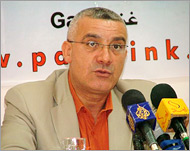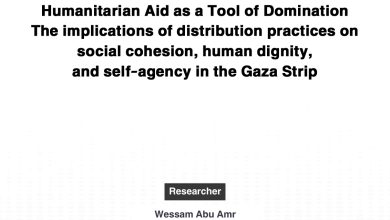The Palestinian-Israeli conflict: A new perspective

by Omar Shaban GAZA CITY – Israelis and Palestinians have been prevented from looking deeper into hidden and untapped opportunities, stuck in the limiting perspective afforded by the prolonged conflict, continued Israeli occupation, and failed peace talks. Both sides burn their energy managing and sometimes escalating the conflict rather than solving it. Very few Palestinians and even fewer Israelis know or can imagine that this small place called “the Gaza Strip” can provide endless opportunities. The Gaza Strip is seen by many people as a poor place, full of violence. However, there are many good examples of productive relationships between Israelis and Palestinians, which indicate, without any doubt, the high potential of this area. Unfortunately, the media covers mostly the news of conflict and hatred rather than the good news. Following is but one example of what a just and fair peace could bring to both sides. For 20 years, the Gaza Strip has become famous for planting and exporting flowers, strawberries and vegetables, like cherry tomatoes. Some years ago, there were more than 1,000 dunams (250 acres) of planted flowers, and 3,000 dunams (750 acres) of strawberries. These cash crops were generating thousands of sustainable, high-quality jobs for Palestinians in the Gaza Strip, and revenues of more than 12 million Euros per year. In 2006, when Israel imposed total closure on the Gaza Strip and restricted the movement of goods and people from entering or leaving Gaza, these two crops and many others were negatively affected; while Gaza exported 60 million carnations and 2,000 tons of strawberries in 2005, only 12 million carnations and 103 tons of strawberries were allowed through the border in 2007. Even worse, in 2007-2008, only 55,000 carnations were exported. This caused huge loses to these sectors and pushed farmers to leave their land and look for other jobs. Surprisingly, in November 2007 Palestinian farmers and their Israeli counterparts appealed together to the Israeli Supreme Court against the Israeli government, urging it to open the crossings. The Supreme Court ordered the Israeli government to do so, which allowed for the export of flowers and strawberries from Gaza into Israel during that month. This was the only export that occurred since the closure imposed on Gaza in June 2007 after Hamas took over the Strip. Many Israelis would have had great difficulty imagining or even believing that these lovely flowers and sweet strawberries they gave to friends were products of Gaza. Palestinian and Israeli farmers were clever enough to find common ground where both made profits while creating real partnerships. While the Israeli and Palestinian political leaderships often invest their energy in sustaining the conflict, there are other people who search for opportunities and attempt to pave the road to a better life. There are fewer profits to be made from the occupation and the conflict than could be created from peace and cooperation between Israelis and Palestinians. There are many Palestinian doctors, engineers, singers, artists, educators and skilled workers who have been given the chance to work in Israeli institutions and therefore have been in direct contact with Israeli society. Those Palestinians have learned much, and have become great assets to the Palestinian community. Those Palestinians were trusted by their Israeli customers or clients. Is it that unrealistic to imagine hundreds or even thousands of professional Palestinians working or being trained in Israeli institutions in the future? It’s time for both sides to see and be seen from a new perspective. Israel would do well to understand that having a fair and just peace with a Palestinian state is much safer and more profitable than sustaining the occupation. Conversely, the Palestinians would do well to see that living in peace with Israel is the only and very best path to prosperity. * Omar Shaban is a senior economic advisor, with over 15 years’ experience in management consultancy and private sector development. He established Pal Think for Strategic Studies and serves as board member in various community organisations and initiatives. This article was written for the Common Ground News Service (CGNews). Source: Common Ground News Service, 19 March 2009, www.commongroundnews.org. Copyright permission is granted for publication.




